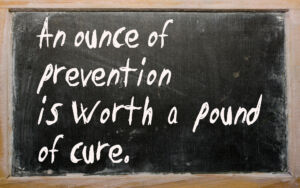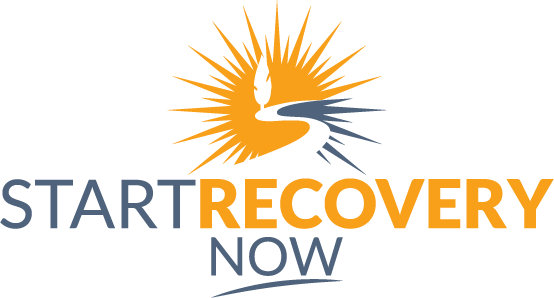Learn the Signs of Addiction
Are you concerned that someone you care about—or perhaps you […]
Are you concerned that someone you care about—or perhaps you yourself—might be showing signs of addiction? Spotting the red flags early on is crucial for timely intervention. This article is a practical guide to help you learn the signs of addiction, encompassing behavioral, physical, and psychological symptoms that may indicate a problem. Whether it’s changes in mood, shifts in physical health, or altered social interactions, we’ll arm you with the knowledge necessary to take the appropriate next steps.
Key Takeaways
- Addiction is characterized by various behavioral, physical, and psychological signs, each revealing different aspects of the condition, impacting not only the individual but also their social relationships.
- Family history plays a crucial role in addiction risk, and recognizing the signs of substance abuse in loved ones can enable timely support and intervention, highlighting the importance of support and understanding in the recovery process.
- Effective addiction treatment and recovery require a personalized approach, considering substance-specific symptoms, potential co-occurring mental health disorders, and the implementation of long-term relapse prevention strategies.
Deciphering the Indicators of Addiction

Unraveling the thread of addiction begins with understanding its indicators. These signs are as complex as the condition itself, branching into behavioral, physical, and psychological domains. Each category revealing a unique facet of addiction, they help paint a comprehensive picture of this multifaceted condition.
Behavioral Signs of Substance Abuse
When substance abuse grips a person, it often manifests in behavioral changes. These alterations, such as mood swings, secretive behavior, and neglect of responsibilities, serve as distress signals, alerting us to the underlying problem.
Additionally, substance abuse can strain social relationships, leading to negative consequences that ripple out into the broader social network, such as a host of challenges.
Physical Symptoms That Suggest Addiction
The physical signs of addiction are often the most noticeable. These can range from changes in appearance and weight to altered sleep patterns and diminished physical coordination. It’s paramount to identify these symptoms as they can clearly signal substance abuse.
Psychological Signals of Addictive Disorders

Psychological signals of addiction can include:
- Mood swings
- Severe anxiety and depression, which can be withdrawal symptoms
- Personality changes
- Various mental health problems
The impact of addiction on mood and behavior can be significant.
The Impact on Family and Friends

Addiction’s influence extends beyond the individual, affecting family members and friends. Being able to spot signs of substance abuse in our close ones, and comprehending the role family history plays in addiction risk are vital steps in offering appropriate support and confronting the problem directly.
Spotting Drug Abuse in Loved Ones
Spotting drug abuse in close ones might seem overwhelming. Nonetheless, vigilance towards the following signs can enable us to lend assistance to those grappling with substance abuse:
- Behavioral shifts
- Mood fluctuations
- Growing secretiveness
- Physical transformations
The Role of Family History in Addiction Risk

Family history plays a significant role in addiction risk. Understanding one’s genetic predispositions can provide crucial insights into potential risk factors for addiction and can guide preventive measures.
Supporting Someone with an Addiction
Supporting someone battling addiction requires understanding, patience, and constant encouragement. From open discussions and seeking assistance to actively participating in their recovery process, each step contributes towards a healthier tomorrow.
Substance-Specific Symptoms of Addiction

Each type of substance abuse carries its unique set of symptoms. Recognizing these particular signs can guide the path to appropriate treatment, whether it involves prescription drugs, alcohol, or illicit substances.
Dangers of Prescription Drugs Misuse
Prescription drug misuse, a growing concern, can lead to addiction and severe health consequences. Understanding the dangers associated with this form of substance abuse, as well as the risks of other drugs, can aid in prevention and timely intervention.
Recognizing Alcohol Use Disorder
Alcohol use disorder, a common addiction and a form of substance use disorder recognized in the diagnostic and statistical manual, presents specific signs and symptoms.
Early recognition and intervention can significantly impact the course of this disorder, paving the way for successful recovery.
Identifying Illicit Drug Addiction
Illicit drug addiction, often involving illegal drugs, poses unique challenges. It requires specialized drug addiction treatment and support, considering the severe health, social, and legal implications that it brings along.
The Journey to Recovery: Seeking Treatment

The journey to recovery begins with the decision to seek treatment. It is a path marked by self-evaluation, personalized treatment plans, and ongoing efforts to prevent relapse.
Evaluating When to Seek Professional Help
Discerning when to reach out for professional help is key. It marks the first step towards recovery, and apprehending the signals that call for professional intervention can clarify this journey.
Creating a Sustainable Treatment Plan
Creating a sustainable treatment plan requires a personalized approach that addresses the unique challenges of each individual’s journey. Ongoing support and a strong therapeutic relationship are key components of this plan.
Preventing Relapse: Strategies for Long-Term Sobriety
Guarding against relapse is a continuous endeavor. This requires identifying triggers, formulating coping strategies, establishing a strong support network, and giving priority to self-care.
Addressing Mental Disorders and Co-Occurring Conditions

Dealing with mental health concerns is a fundamental aspect of addiction recovery. Frequently, mental health disorders and addiction coincide, necessitating concurrent treatment of both conditions.
The Link Between Substance Abuse and Mental Health
Substance abuse and mental health disorders often coexist. Understanding this relationship can help health care providers in providing integrated care and addressing both conditions simultaneously.
Managing Dual Diagnosis
Managing dual diagnosis requires specialized treatment approaches. It is important to address both the addiction and the mental health disorder to ensure successful recovery.
Importance of Treating Both Conditions Simultaneously
Treating both addiction and mental health disorders simultaneously is crucial for long-term recovery. Integrated treatment approaches cater to the unique needs of individuals with dual diagnosis, promoting overall well-being.
Prevention and Education: Reducing the Risk Factors

Prevention and education play a significant role in reducing the risk factors associated with addiction. From educating youth about the risks to leveraging community support, these efforts can help mitigate addiction risk factors.
Educating Youth on the Risks of Drug Use
Educating the youth regarding drug use risks is a vital preventive step. This approach arms young individuals with the necessary knowledge to make informed choices and encourages a healthier lifestyle.
Mitigating Risk Factors Through Community Support
Community support can be a powerful tool in mitigating addiction risk factors. It provides resources, raises awareness, and creates a supportive environment for those at risk.
Recognizing and Addressing Early Warning Signs
Identifying and tackling early addiction warning signs can facilitate prompt intervention and support. Familiarizing oneself with these signals can be the initial move towards prevention and recovery.
Summary
Navigating the complexities of addiction, we’ve explored the indicators, the impact on loved ones, the importance of recognizing substance-specific symptoms, the journey to recovery, the link with mental health disorders, and the role of prevention and education. Recognizing the signs, understanding the types of addiction recovery, seeking professional help, and providing support are crucial steps on the path to recovery.
Frequently Asked Questions

What are 4 signs of addiction?
Four markers of addiction include problems at work or school, loss of energy or motivation, neglecting one’s appearance, and spending excessive amounts of money on the substance. These can be indicators of a substance or behavior addiction, and it’s important to seek help if you or someone you know is exhibiting these signs.
What are the common behavioral signs of addiction?
If you notice mood swings, secretive behavior, and neglect of responsibilities, these may be common behavioral signs of addiction.
How does addiction affect family and friends?
Addiction can strain family relationships, cause financial difficulties, and lead to a breakdown of trust, affecting the well-being of family and friends.
Why is it important to treat mental health disorders and addiction simultaneously?
It is important to treat mental health disorders and addiction simultaneously because it can improve recovery outcomes and prevent the exacerbation of symptoms. This approach addresses both conditions comprehensively and can lead to better results.
What is the role of community support in addiction prevention?
Community support plays a crucial role in addiction prevention by mitigating risk factors, raising awareness, and providing resources for those in need.




